Projectile Point Types in Missouri and Portions of Adjacent States by Jack H. Ray
$40.00
wholesale discount available
Out of stock
Description
This book describes 53 point types in detail with sections on stem and blade morphology, heat treatment, distribution, age, and general comments. Each type is illustrated with line drawings by Linda S. Ellis and Del Thompson.
Point types are divided into five sections based on notching technique. Also included are an introduction, a section on dating methods, two appendices (one on point-type morphometrics), and an index. This spirally bound point guide should prove to be a valuable resource in the field and lab.
Society members are entitled to a $10 discount when purchasing this book. If you are a Society member, please contact the MAS office for the member coupon code.
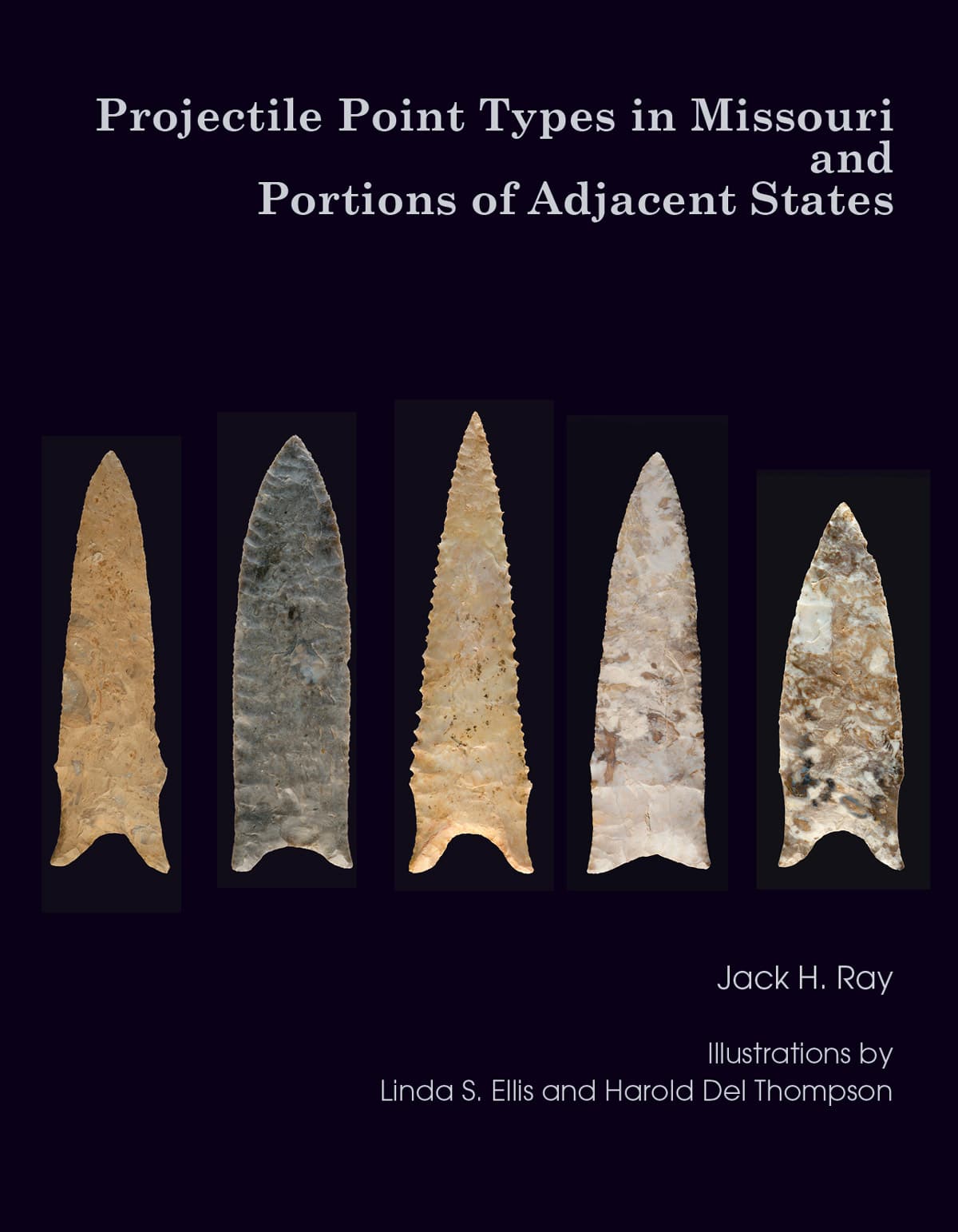
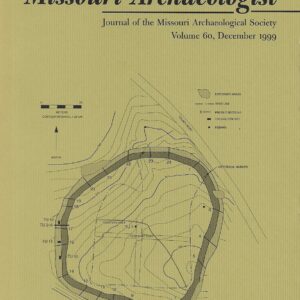
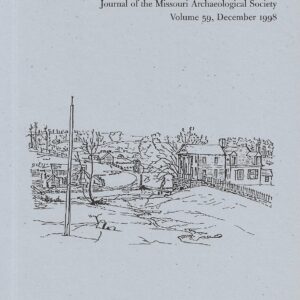
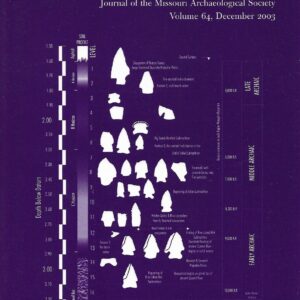
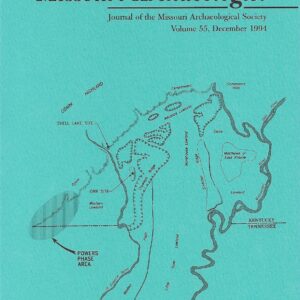
Mike S. –
This is an excellent guide for those who want to know the science behind the ages and distributions of various point types that occur in Missouri and “portions of adjacent states.” I highly recommend it. The only improvement I can offer is possibly a few photos of some of the points as a complement to the illustrations. Some of the illustrations could also be improved. This, however, does not detract from the value of the publication as a top-shelf reference guide.
Jim Feagins –
This volume is well written, well organized, and a most useful projectile point guide for Missouri and adjacent areas. Containing far more detailed information on each of the 53 projectile points it describe than any of the 10 or 12 other point guides in my library. Two or three pages are usually devoted to each point type and contain: an introduction, point description (focusing on stem, blade, and line drawings), heat treatment, point distribution (including a map), age, and comments on special attributes and differences and similarities to certain other point types, etc. It is the first point reference I go to for up to date information on point types from this portion of the mid-continent. I highly recommend the volume.
A. Banks –
Jack Ray’s main focus during his almost 40 year career in archaeology in Missouri has been lithic technology and chipped-stone resources. There is no one better qualified to write a book about projectile point types in Missouri.
There has been a need for such a book for many years and this book fulfills that need.
The book describes 53 projectile point types which are the majority of point types likely to be found in Missouri. For each point type there is a section on description, heat treatment, distribution, age, and general comments. The distribution maps are particularly helpful in visualizing the areas where the point types are concentrated and the age information is based on the latest dating information. There are several well executed drawings of each point type to illustrate the variations of the type. In addition to the information on each point type the book has general sections on archaeology, the cultural periods in the Midwest, geography and geology, dating artifacts, and more.
This book is a valuable resource for both professional and avocational archaeologists, and the collecting community which benefits from accurate educational information.
Bruce McMillan –
Midwestern archaeologists began the quest for making sense of the diversity of forms in projectile points as early as the late 1920s (Deuel 1927). A decade later Black and Weer (1936) proposed a classification system for artifacts, including projectile points and soon, Adams (1940) would follow their lead. Eight years later, Alex Krieger would author his seminal paper on “The Typological Concept (Krieger 1944).
By the 1950s Missouri archaeologists, as well as their colleagues in adjacent states, were beginning to name specific projectile point types (Bray 1956:123-131). This was truly a decade when the naming of projectile point types was central to archaeological endeavors (e.g., Bell 1958; Bell and Hall 1953; Kneberg 1956; Scully 1951; Suhm et al. 1954). Subsequently, Krieger (1964:492) when discussing the “New World Lithic Typology Project,” wrote that one of the goals was “to prepare manuals in which general terminology is consistent and individual types are described, illustrated, and accompanied by distribution maps to which have been added age estimates derived from radiocarbon dates or other means.” This objective has been met in a number of states, but only recently in Missouri.
Carl B. Sandstrom and Jack Ray prepared a handbook for projectile point identification, but only for the 26 counties that comprise southwest Missouri (Sandstrom and Ray 2004). Ray’s 2016 manual, Projectile Point Types in Missouri and Portions of Adjacent States, finally fills the need for a comprehensive guide for Missouri. Fifty-three projectile point types are identified and described in detail, with comments on stem and blade morphology, heat treatment, distribution, and age. The types are well illustrated showing the range of diversity within a type. Maps of Missouri and surrounding states show the distribution of each projectile point type.
The booklet is easy to use since point types are divided into five sections based on notching technique. Jack Ray’s contribution to Missouri archaeology will be valuable to both professional as well as nonprofessional archaeologists, and for that matter individuals with an interest in the subject. I find the discussion of age, based on specific radiocarbon dates, particularly useful and the distribution maps are essential.
Jack Ray is to be commended for finally producing a projectile point manual for Missouri, a study that should be on the bookshelf of every archaeologist, professional and amateur alike.
References Cited
Adams, Robert McCormick
1940 Diagnostic Flint Points. American Antiquity 6:72–75.
Bell, Robert E.
1958 Guide to the Identification of Certain American Indian Projectile Points. Special Bulletin No. 1, Oklahoma Anthropological Society. Leslie H. Butts. Oklahoma City.
Bell, Robert E., and Roland S. Hall
1953 Selected Projectile Point Types of he United States. Bulletin of the Oklahoma Anthropological Society 1:1-16.
Black, Glenn A., and Paul Weer
1936 A Proposed Terminology for Shape Classifications of Artifacts. American Antiquity 1(4):280–294.
Deuel, Thorne
1927 A Proposed Classification of Stone Projective Points. Manuscript on file, Department of Anthropology, University of Texas, Austin.
Kneberg, Madeline
1956 Some Important Projectile Point Types Found in the Tennessee Area. Tennessee Archaeologist 12(1):17–28.
Krieger, Alex D.
1944 The Typological Concept. American Antiquity 9(3):271–288.
1964 New World Lithic Typology Project: Part II. American Antiquity 29(4):489–493.
Sandstrom, Carl B., and Jack H. Ray
2004 A Point Identification Guide for Southwest Missouri. Ozarks Chapter of the Missouri Archaeological Society, Springfield.
Scully, Edward G.
1951 Some Central Mississippi Valley Projectile Point Types. Museum of Anthropology, University of Michigan, Ann Arbor.
Suhm, Dee Ann, Alex D. Krieger, and Edward B. Jelks
1954 An Introductory Handbook of Texas Archeology. Bulletin No. 25. Texas Archeological Society, Austin.
Terrell Martin –
Jack Ray’s recent publication (“Projectile Point Types in Missouri and Portions of Adjacent States”) expands on his previous publication for southeast Missouri (Sandstrom and Ray 2004) and borrows from his 40 years of research regarding chipped-stone artifacts and lithic procurement strategies. His book entitled, “Ozarks Chipped-Stone Resources” (2007) is a masterpiece regarding the lithic material available to prehistoric knappers. Some of his other publications have inspired many of my research endeavors over the years (e.g., Martin and Hughes 2016). There is certainly no one better qualified to write a book about projectile point types in Missouri and adjacent states.
I have recommended and praised Jack’s current point guide on several archaeological websites, such The Den and The Amateur Archaeologist, which have a membership of thousands of amateur/avocational archaeologists as well as contributing professionals. Jack’s book is an “easy read” and invaluable to both the avocational and professional archaeologists.
I especially find Jack’s use of technological attributes to identify point types to be of value. He tends to avoid the traditional method of typing points which relies heavily on morphologies or point outlines which are often determined by the quality of the material being worked, the skill of the knapper, or the idiosyncratic preferences of the knapper. He also affectively synthesizes the confusing and duplicated names often given to the same point type.
Martin, Terrell L and Richard E. Hughes.
2016 Recent Research on Obsidian from Missouri Archaeological Sites. Midcontinental Journal of Archaeology 41(2):186–206
Ray, Jack H.
2007 Ozarks Chipped-Stone Resources: A Guide to the Identification, and Prehistoric Use of Cherts and Other Siliceous Raw Materials. Special Publications No. 8. Missouri Archaeological Society, Springfield.
Sandstrom, Carl B., and Jack H. Ray
2004 Point Identification Guide for Southwest Missouri. Ozarks Chapter of the Missouri Archaeological Society, Springfield.